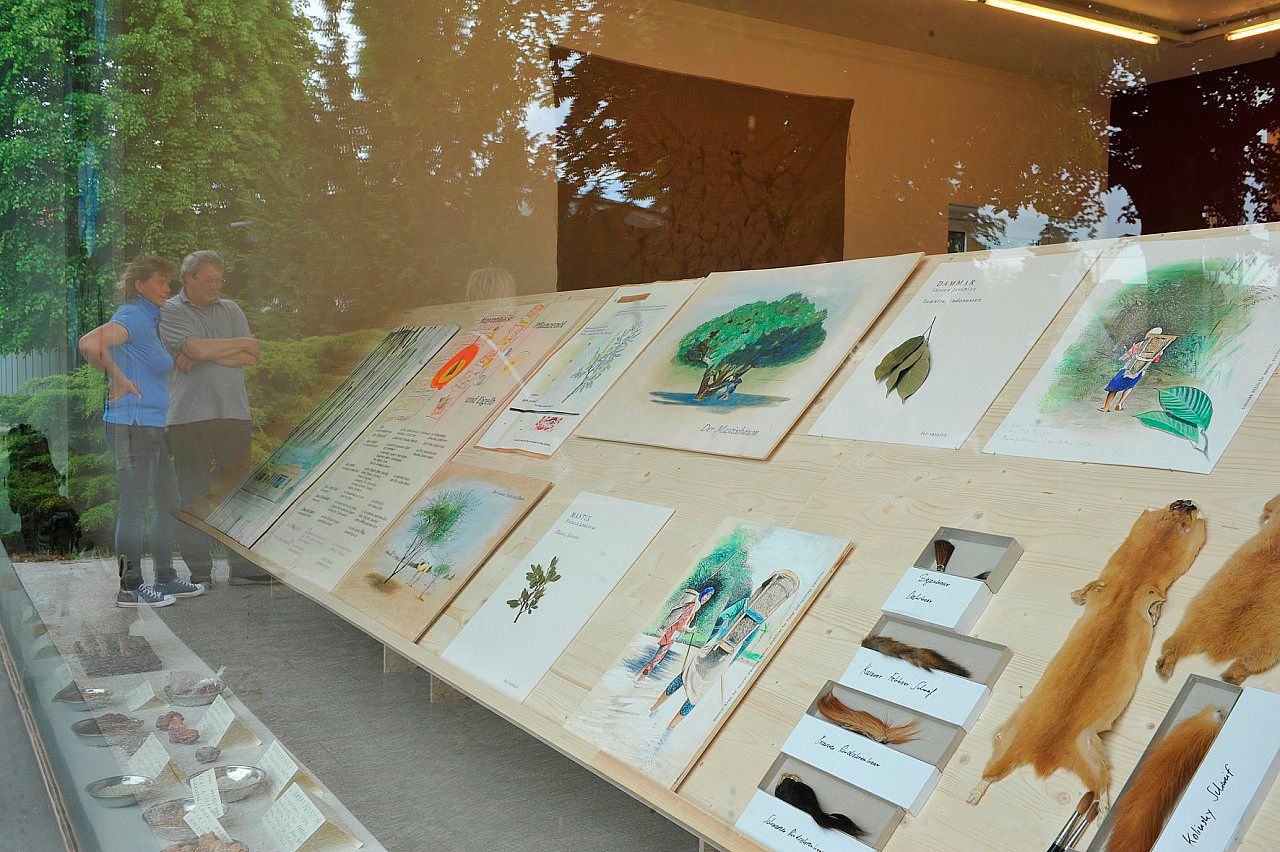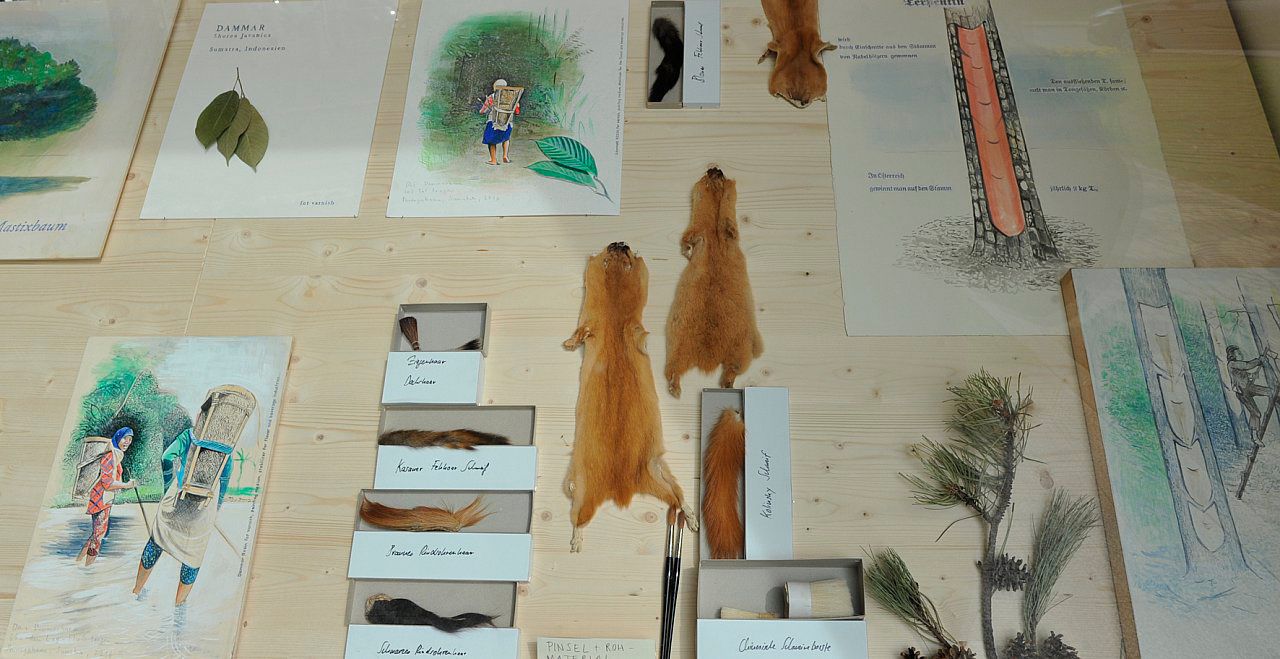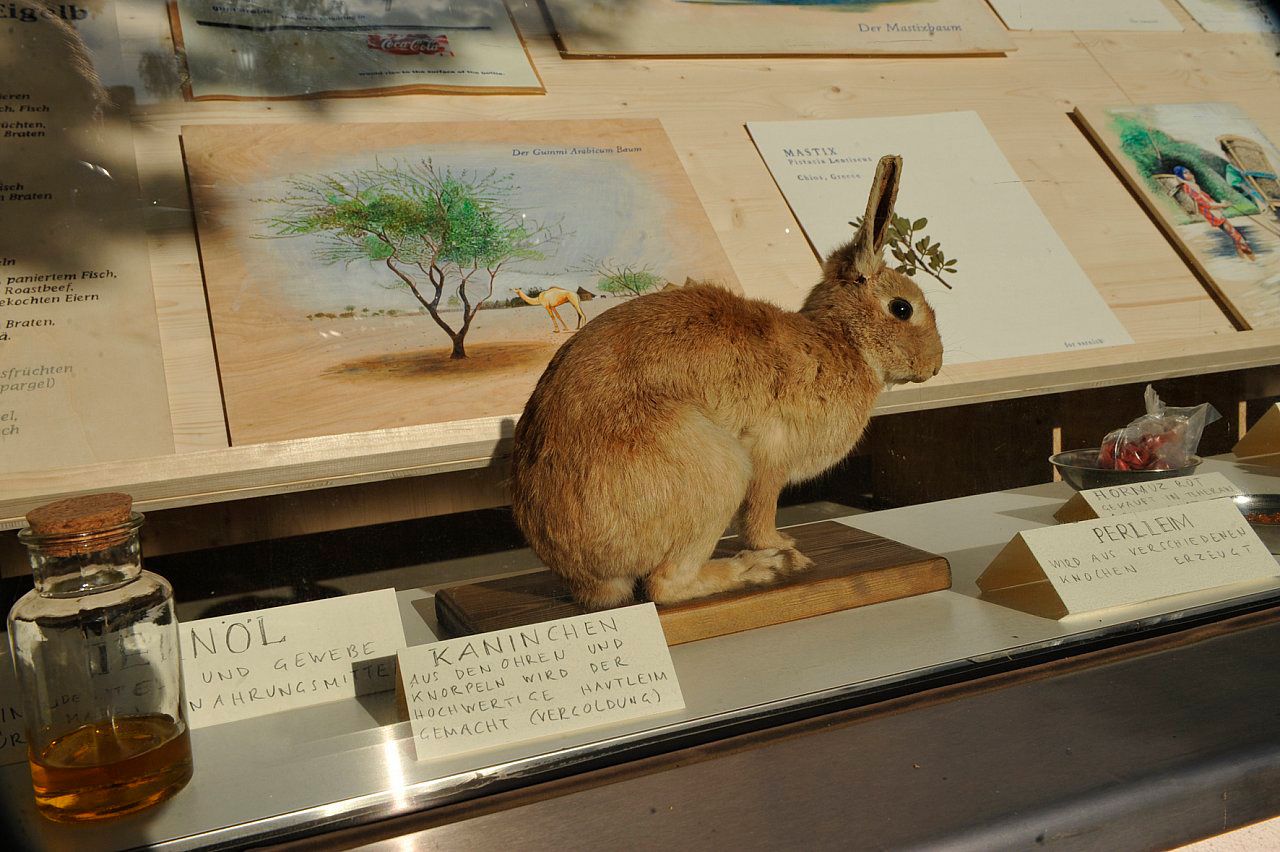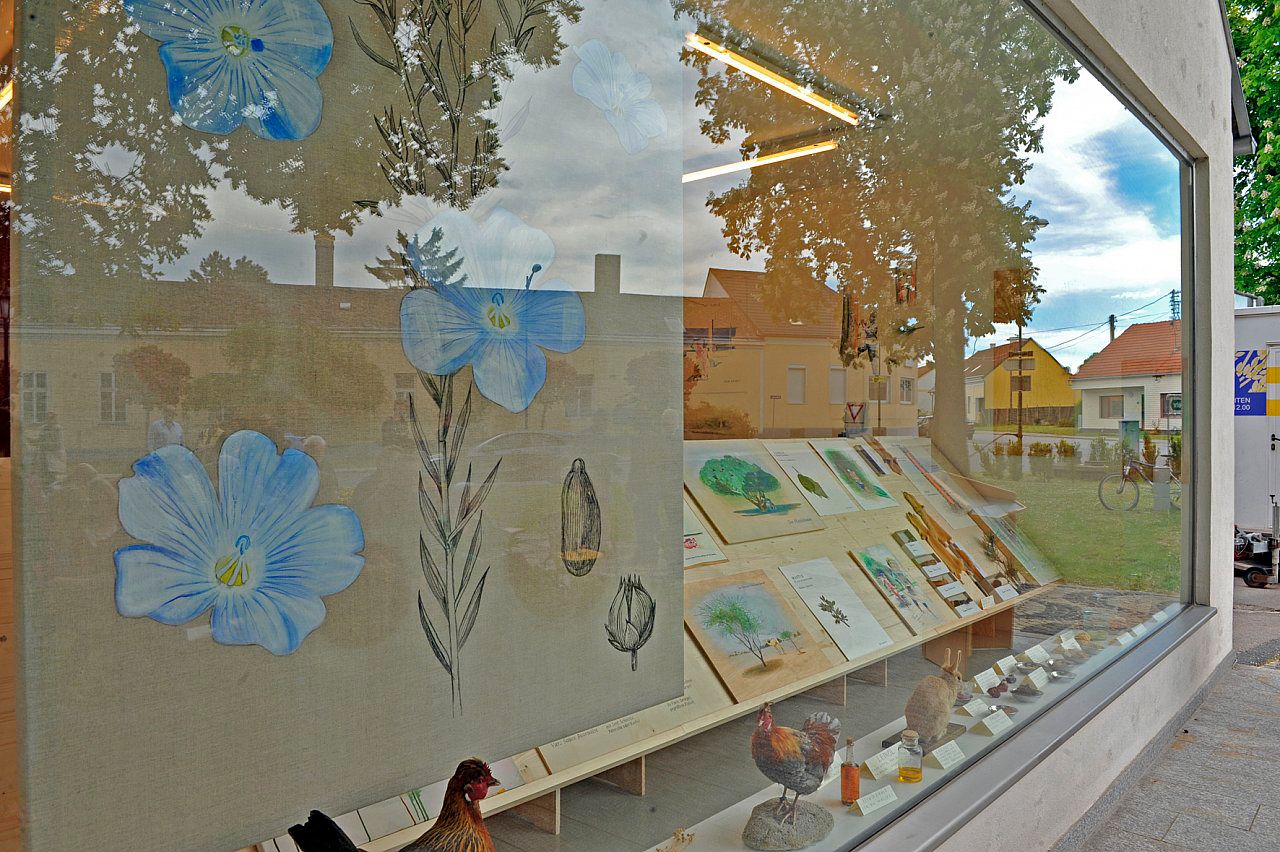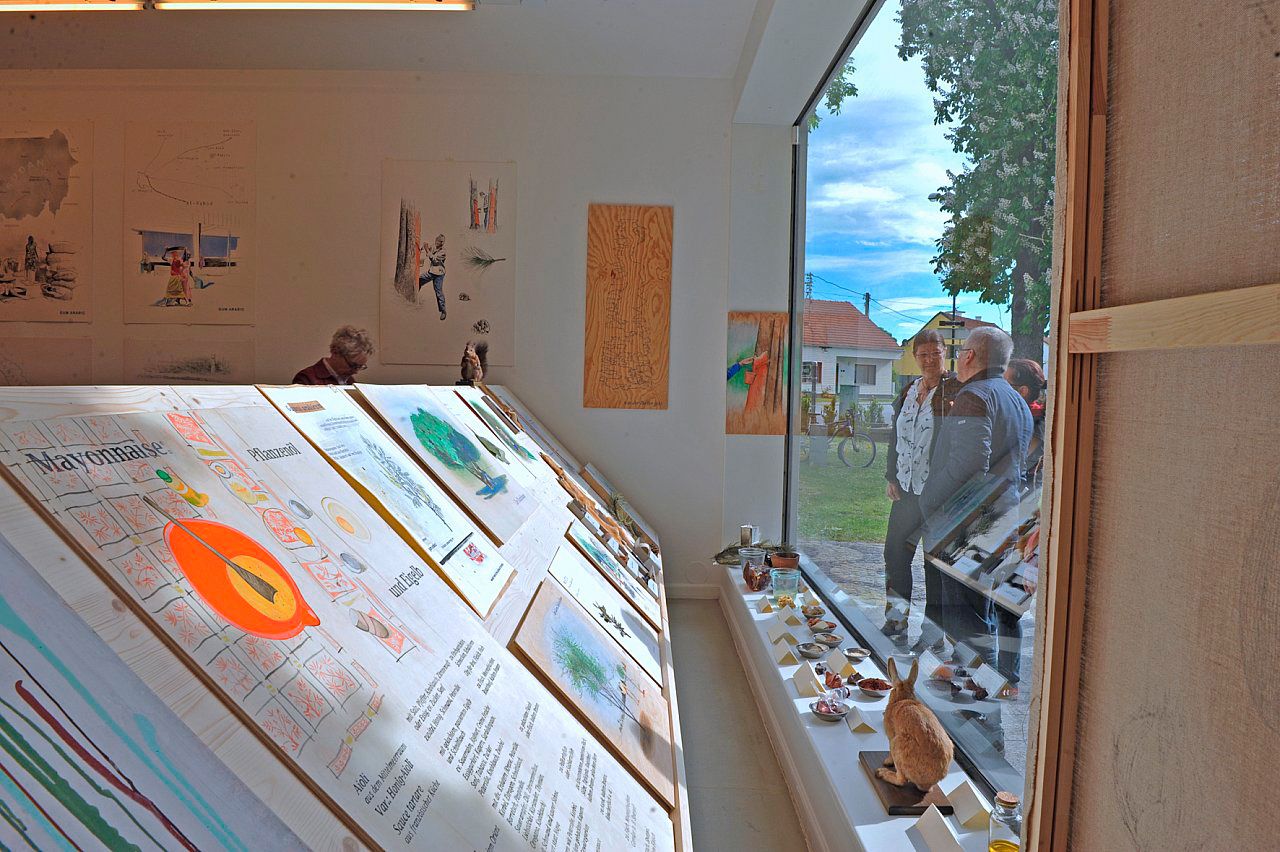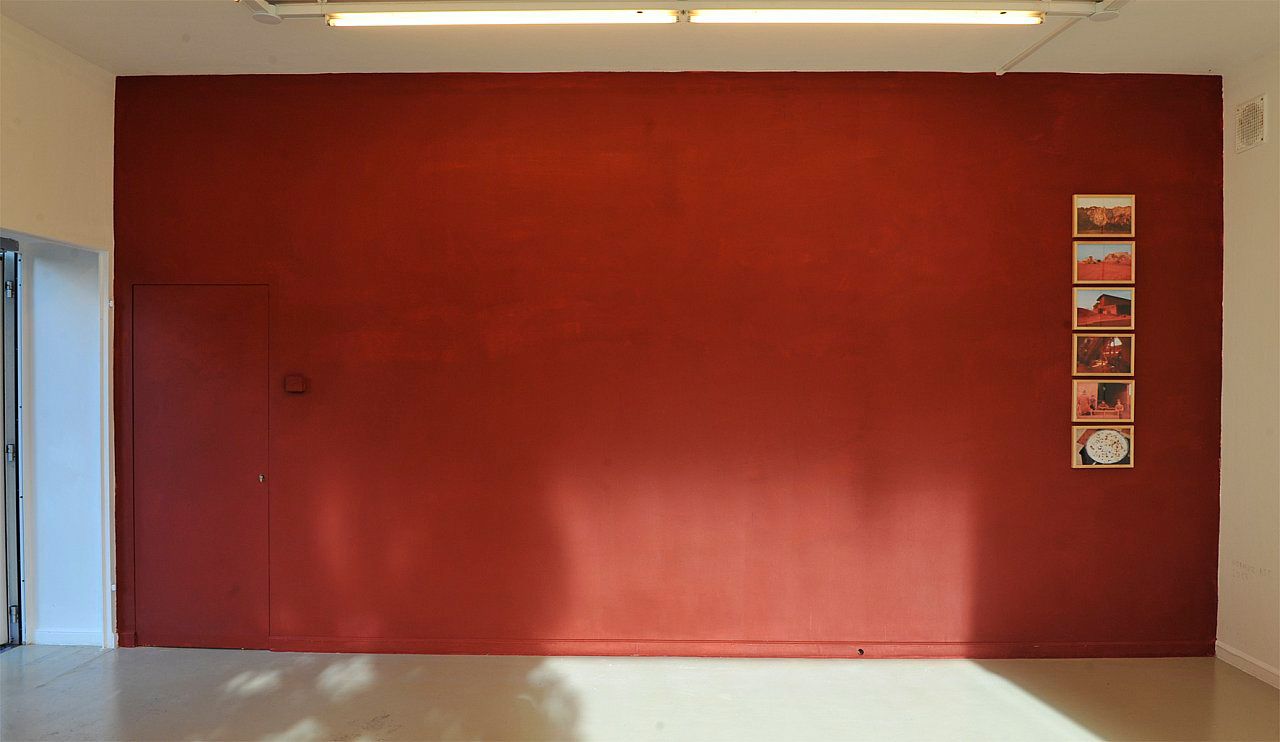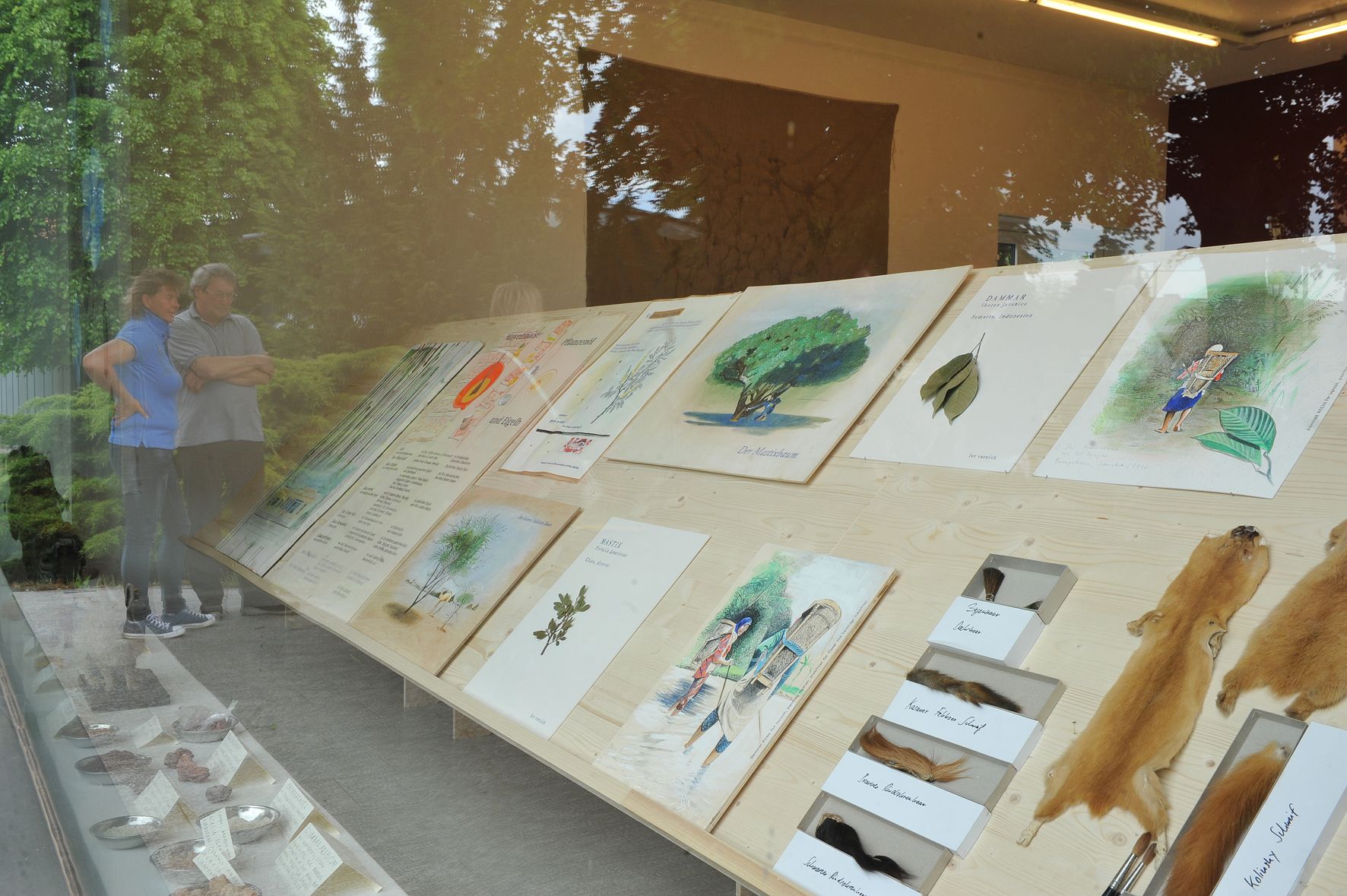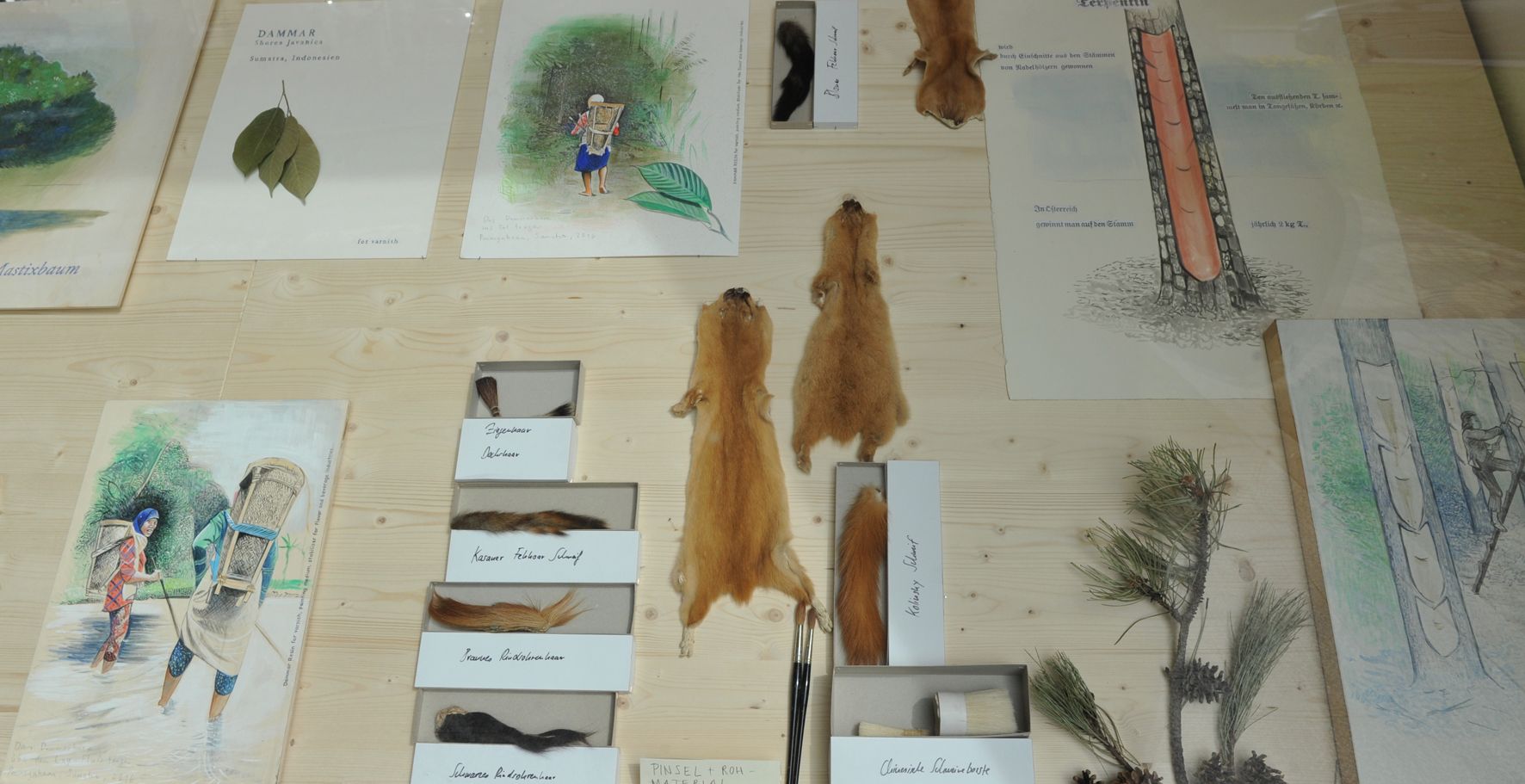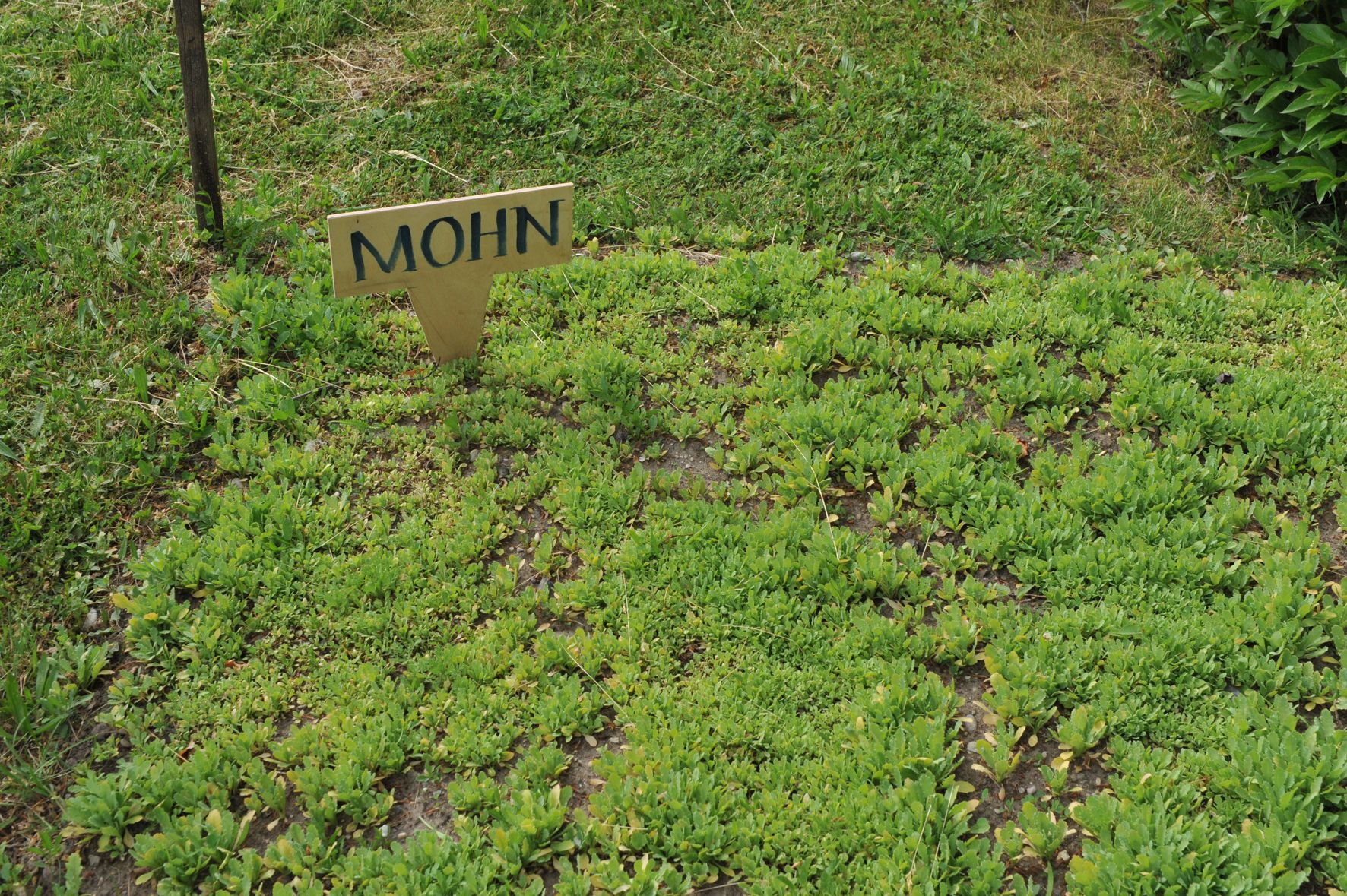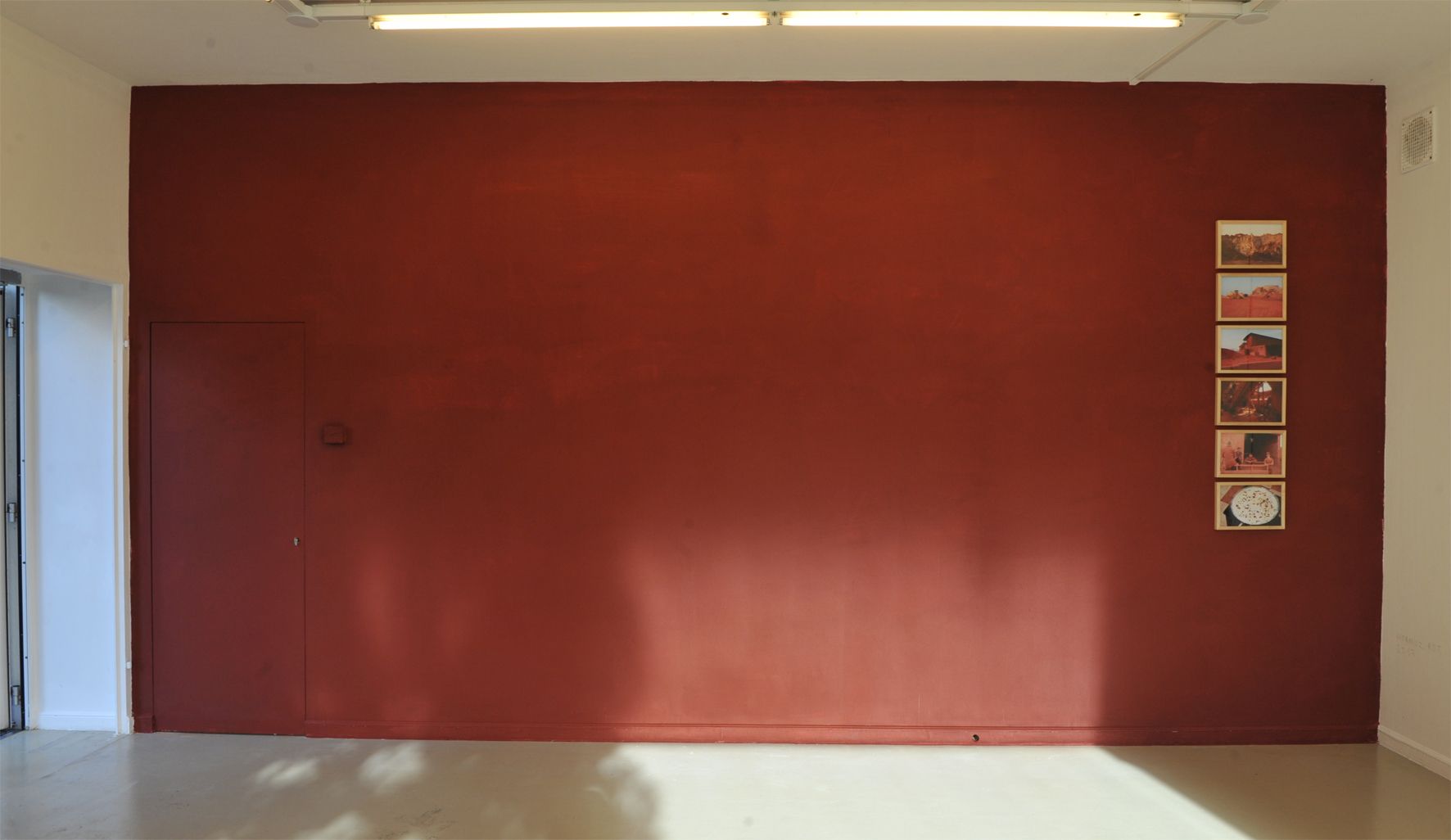Helmut Kandl,
Johanna Kandl
:
The (Woman) Painter, the Cook, and Alchemy
Back
Information
After remodeling an old fire station and turning it into an exhibition space for contemporary art, Michael Kienzer and a local Jury invited artists to create temporary installations that would last half a year and would also be visible from the outside through a large window. He thus transformed the entire building into a sculpture in public space.
The materials and conditions of painterly production are not only expressed in the pictures of Johanna Kandl; they are also a major theme. Where is the linen for canvas manufactured, how, and by whom? Where does the hair come from for paint brushes, and from what animals? And what role does gum arabic, which is produced in countries like Senegal, Sudan, and Nigeria, play as a binding agent for paint and as an additive in the food industry? That many materials and ingredients can be found both in the kitchen and art is the theme of Johanna and Helmut Kandl’s exhibition Die Malerin, der Koch und die Alchemie (The (Woman) Painter, the Cook, and Alchemy). They present and serve these ingredients, which represent a contemporary notion of culture, as a mixture of pictures, installation, and a culinary collection that, when we look closer at the details, leave an aftertaste of global chains of production. In analogy to mixing water and oil in an emulsion, this exhibition blends local and global components of art and culture using an analytical approach. In this context, the global economy, labor conditions, and the history of colonialism become just as important as the relationship between art and everyday life. If our understanding of culture regards cuisine as something separate from art and the history of cultivating natural materials, then we overlook the real connections and proximities between these two fields of practice. In the scheme of ideological categories, these fields also seem further apart than they actually are. The invocation of alchemy is thus a tongue-in-cheek way of bringing the materials and ingredients from different cultural backgrounds back together and juxtaposing their supposedly different origins and histories with the idea of a viscous culture, while making the aroma of transcultural influences more appealing. If the view of the exhibition through the large window of the art space reminds us of a shop window, then not least because a localization of culture from various local and global perspectives can be obtained here.
(Andreas Spiegl)
